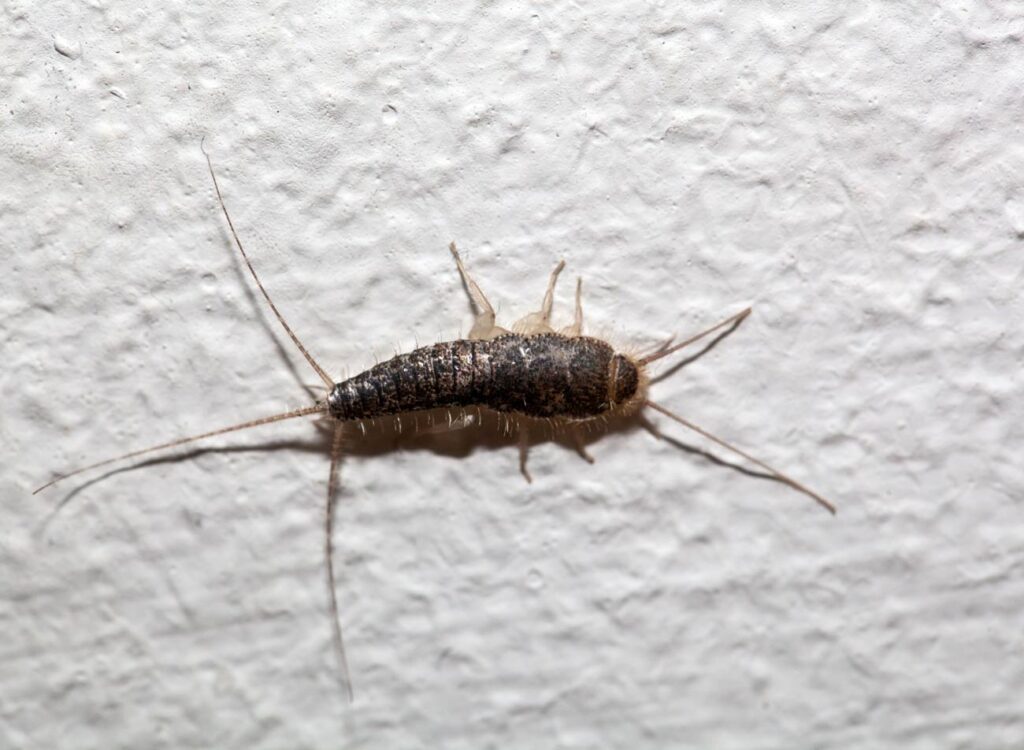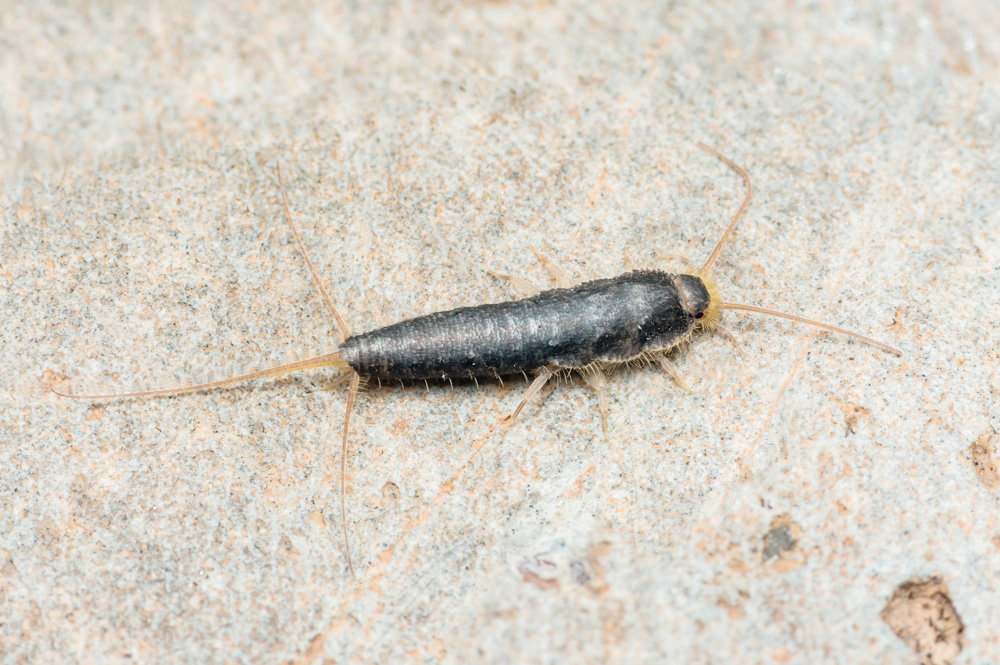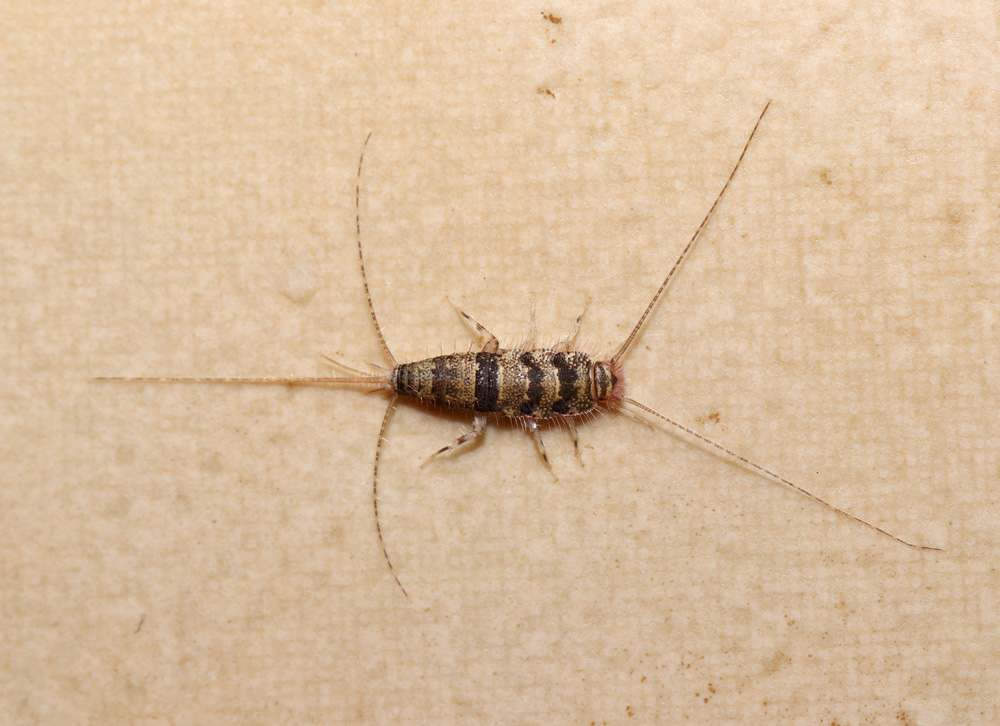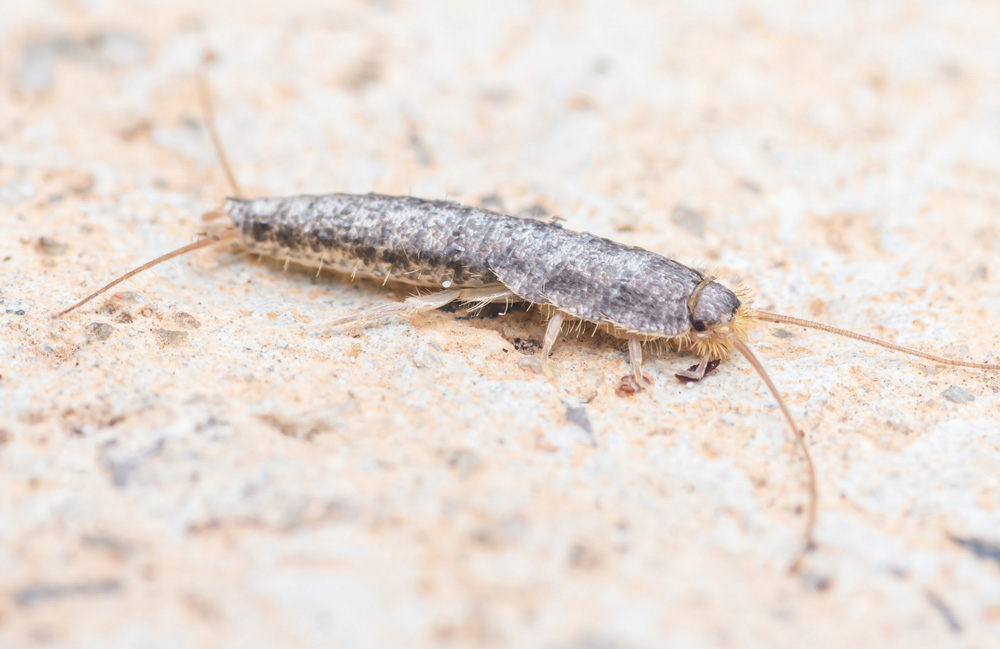Silverfish can cause significant damage before homeowners even realize they’re there. These fast-moving insects thrive in dark, humid areas such as attics, basements, bathrooms, and pantries. They feed on paper, glue, fabrics, and starchy materials, damaging books, wallpaper, and clothing in the process. Their shed scales and droppings can trigger allergies, and their presence may attract other pests like spiders. Because silverfish are most active at night and hide in cracks or crevices during the day, infestations often go unnoticed until the damage becomes severe. At LONESTAR Pest Solutions, we identify high-moisture areas, locate hidden infestation sites, and apply effective treatments to eliminate silverfish and protect your belongings.


The most widespread species, often found in kitchens, bathrooms, attics, and basements. They feed on paper, wallpaper glue, and stored food.
Size, Color: About ½ inch long; silvery-gray and teardrop-shaped with long antennae.
Identifying Characteristics: Metallic sheen, tapered body, and three tail-like bristles.
Where does it nest/hide? Dark, humid spots—behind baseboards, in closets, or under sinks.
When does it typically reproduce? Year-round in humid environments; eggs hatch in several weeks.
What is it attracted to? Starch, paper, fabrics, and moisture.

Closely related to silverfish, these insects prefer warmer environments like water heaters, furnaces, and boiler rooms. They are equally destructive to fabrics and stored goods.
Size, Color: About ½ inch long; mottled gray and brown with a carrot-shaped body.
Identifying Characteristics: Two long antennae and three rear bristles like silverfish, but with a speckled pattern.
Where does it nest/hide? Warm, humid areas near furnaces, laundry rooms, and attics.
When does it typically reproduce? Throughout the year in warm conditions.
What is it attracted to? Heat, humidity, and starchy materials like book bindings or glue.

Slightly larger than common silverfish, these insects often infest libraries, storage spaces, and offices where books, files, and cardboard are abundant.
Size, Color: About ¾ inch long; dull gray with fine scales.
Identifying Characteristics: Flattened, wingless body with long antennae and tail filaments.
Where does it nest/hide? Paper storage, offices, and dark corners with limited airflow.
When does it typically reproduce? Year-round in stable indoor temperatures.
What is it attracted to? Paper, glue, cardboard, and humid environments.
Identify infestation sites in attics, kitchens, bathrooms, and storage areas
Locate sources of humidity and moisture that support silverfish activity
Assess damage to belongings and vulnerable areas of the home
Apply targeted treatments to cracks, crevices, and high-activity zones
Reduce humidity with moisture control strategies
Treat infested storage areas to stop ongoing damage
Recommend long-term humidity control (dehumidifiers, ventilation improvements)
Seal cracks and gaps to limit silverfish entry and movement
Provide return inspections to confirm elimination and ongoing prevention
Lorem ipsum dolor sit amet, mea ei viderer probatus consequuntur, sonet vocibus lobortis has ad. Eos erant indoctum an, dictas invidunt est ex, et sea consulatu torquatos. Nostro aperiam petentium eu nam, mel debet urbanitas ad, idque complectitur eu quo. An sea autem dolore dolores.
As outdoor conditions cool, silverfish move deeper indoors to maintain access to moisture and food sources. Damage to stored clothing and paper increases.
Our comprehensive pest inspection and prevention program focuses on early detection and elimination of conditions that attract unwanted pests. Through ongoing monitoring and tailored maintenance, we help ensure a safe, pest-free environment for your facilities year-round.
A proactive rodent management program reduces costly damage, contamination, and emergency callouts often associated with reactive treatments. By addressing potential issues early, LONESTAR Pest Solutions helps protect both your facilities and your budget through consistent, preventive care.
Our hassle-free scheduling and routine visits allow your team to stay focused on daily operations while we handle pest prevention behind the scenes. With reliable service you can count on, LONESTAR Pest Solutions ensures your facilities remain protected—without interruption or added effort on your part.
From effective elimination to long-term prevention, we provide more than just products — we provide peace of mind. Our professional-grade solutions are designed to target pests quickly and efficiently, while our certified experts are here to guide you every step of the way. With personalized guidance and the assurance of high-quality standards, you’ll have the confidence to take back control of your environment.
Great customer service with Team Theresa at the front desk & Cameron, my technician. They are a joy to work with. Theresa consistently like clock work schedules my appointments quarterly & timely. Cameron has done an incredible job going above & beyond maintaining my grandson’s sandbox outside – ant free! It is a such a relief. Never mind his meticulously attention to detail inside my home is much appreciated. Both Theresa & Cameron are a valuable asset to Lone Star Pest. Call them!
— Susie Gold
Lonestar does our quarterly pest control and we had to call for re-spray of our kitchen due to these 100 plus degree temperature days. They sent Eddie over right away and he was so helpful telling me to pick up dog food every day, plug drains daily, use vinegar solution for drains, and make sure they always spray an area of the custom cabinets that has a gap between the cabinets and wall. He was the best! Really educated me and was so patient and even funny as I stared wide eyed over his knowledge of all things cockroaches.
— Carolyn Wafford
Have used Lonestar for years for normal treatments inside and outside, but just recently used them for mosquito control prior to an outdoor graduation pool party. EXCELLENT RESULTS AND PHENOMENAL SERVICE! We had them do a general area fogging and then leave-behind portable remote controlled area “mister” — we haven’t seen a mosquito in two weeks!
— John Seamon
We have used Richard’s team for years. Recently we learned our neighbor’s had termites. We contacted Lone Star to learn about our options. The solution provided was better than solutions our neighbors suggested. In fact, we learned of several pitfalls that our neighbors might encounter (beyond higher cost over the long term).
— Timothy Smith